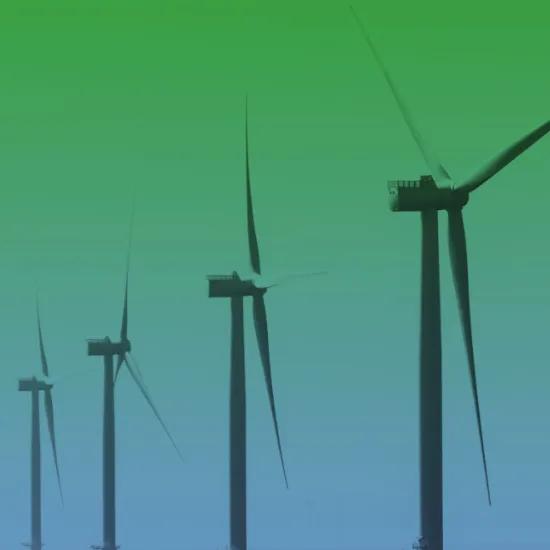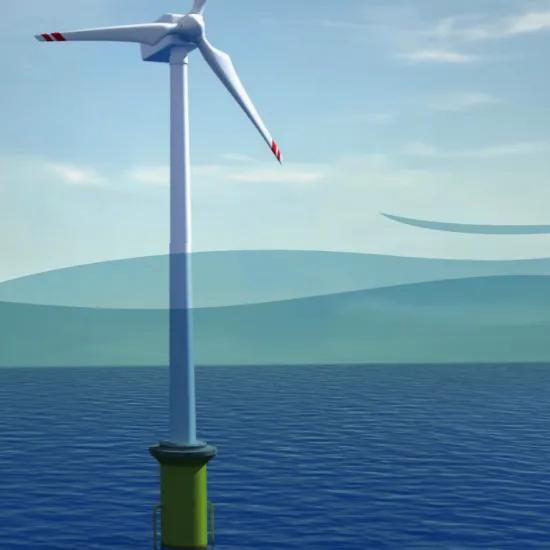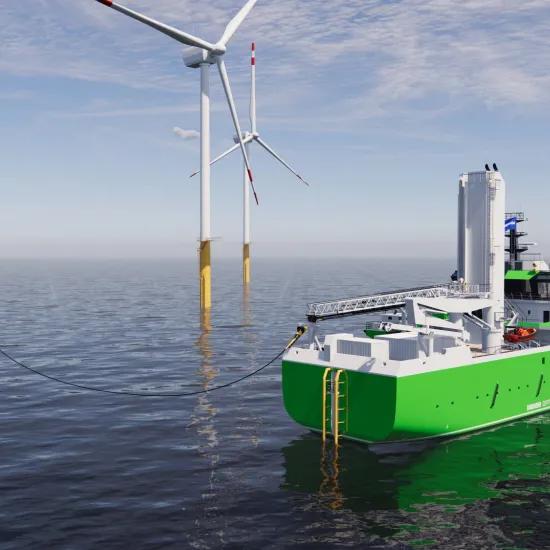In the context of the VIS-OWOME project dynamic dashboards were developed to monitor and analyse different machine signals. This should make it easier to understand and anticipate machine condition and performance, and allow for the detection of certain phenomena.
Certain signals are measured in and around machines, for example, wind turbines, including: wind speed, wind direction, air pressure, temperature and vibrations. More signals will obviously be measured when a whole fleet of machines is involved, like in a wind turbine farm. In order to anticipate the condition or performance of turbines, these signals must be analysed and checked. Monitoring this large stream of signals is not, however, easy to do. Neither is it always clear at first sight how a signal should be presented in order to see certain phenomena. Suppose an operator wants to know whether a wind turbine performs better in certain wind directions. In that case he may choose to visualise wind speed data in a scatter plot or a histogram. It is quite a laborious task for this operator to upload and visualise the signals himself.
Automatic combination and visualisation of sensor data and plots
Dynamic dashboards are required to solve this problem, because the dashboard will autonomously detect the sensors and the visualisation options. Making such dynamic dashboards work requires encapsulating sensors in web APIs. A web API enables data interaction over the internet. A visualisation library can also be encapsulated analogously in similar web APIs. For the dashboard to know what to do with these web APIs, every web API is semantically described by adding machine-interpretable information which gives an explanation about the web API and about how it can be used. This is how the dashboard can use this semantic information to combine automatic sensor data and diagrams and then visualise it for the user.
In order to combine sensor data and possible diagrams, the dashboard also has a reasoner which can draw conclusions on the basis of data and semantic descriptions. For example, if the semantic reasoner receives information from the wind speed sensor, on the one hand, and different semantic descriptions from plots, on the other, the reasoner can determine that the sensor supplies continuous data and that it can be visualised on the basis of a time series plot and possibly other matching plots. The dashboard will thus determine the different options and represent these to the operator, allowing the operator to make a choice. Once the choice is made, the dashboard will automatically create the visualisation by combining the web API of the sensor and the web API of the time series plot.
Benefits
This way of generating dashboards can obviously give quick results to the operator, without requiring an insight in the data structure. In addition, such dashboards are easy to expand. Installing new sensors simply requires them to be encapsulated in a web API and be semantically described, after which the dashboard will automatically detect it and the operator will be able to use and visualise them.
A video about how a dynamic dashboard works is available on https://www.youtube.com
Source for this blog is Dynamic monitoring dashboards through composition of web and visualisation services
More information? Please contact the OWI-Lab, Sofie Van Hoecke (UGent) or Olivier Janssens (UGent).




